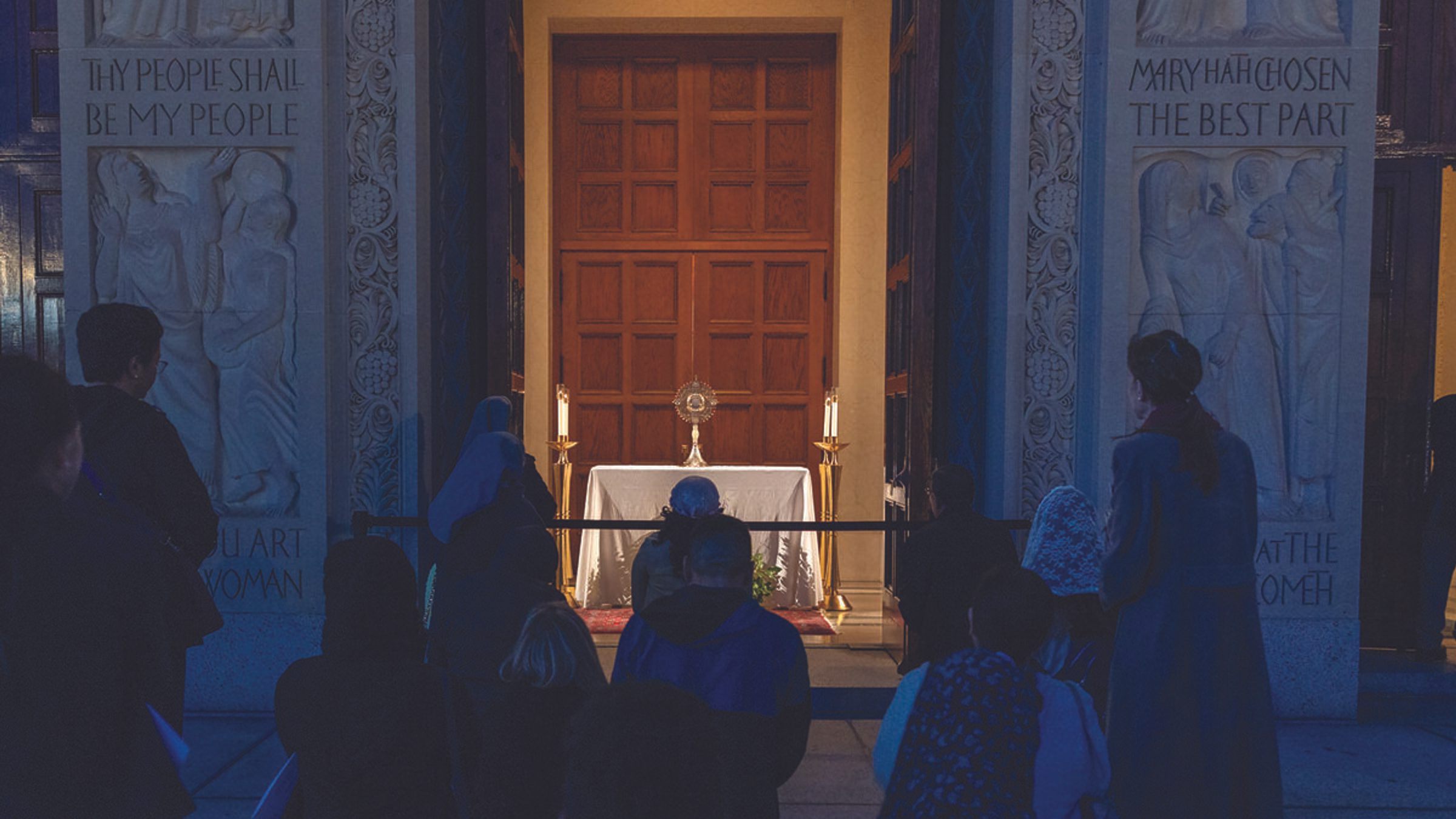Washington Cardinal Wilton Gregory noted that “more and more people are seeking opportunities for perpetual adoration of the exposed Eucharist.”
And in his Mass homily March 7 at the Basilica of the National Shrine of the Immaculate Conception starting its annual 40 Hours Devotional Prayer, he said, “I suspect that the reasons may be legion.”
“Tradition reveals that Catholics have increased our Eucharistic devotional practices during times of crises or as an expression of remorse for sin,” Cardinal Gregory said.
He said, “If our quandary or the realization of the crisis of our highly alienated environment – both nationally and ecclesiastically, or the disparaging and rapid increase in anti-Semitic violence and Islamophobia, or other forms of blatant racism provide the cause or source of our increased desire for prayer time before the Blessed Sacrament, then we might have no shortage of explanations as to which we could attribute this contemporary phenomenon.”
The cardinal said, “The social and moral life of the United States has never have faced so many distinct and significant motives for prayer before the Eucharistic presence of the Lord.
“From the relentless attacks on the sanctity and dignity of the human family to the widespread need for more candidates for the clerical and religious life, from the unpredictable weather patterns that routinely devastate our world to the loss of a sense of the dignity of family life, from the brutal expressions of widespread violence that have become the topic of the evening news almost every day to the loss of hope and confidence in the future for many of our young people, we lack for no good reason to fall on our knees before the Eucharistic presence of the one who told us: ‘It is I. Do not be afraid,’" he added.
Those who practice Eucharistic adoration may have more personal reasons when praying, Cardinal Gregory said: a sick spouse, a child who has stopped practicing the faith, a health concern, finding a job, selling a house; “our lists of personal needs may be quite lengthy.”
He added, “We should also ask the Lord for those gifts that will heal the divisions in our nation and in our Church. We should seek those things that will benefit the common good of all our neighbors and especially those who are poor.”
Another reason for increased devotion, according to the cardinal, has to do with the Eucharist itself: the apparent decline in the number of Catholics who believe that in the Eucharist is what is known as the “real presence” of Jesus. The response to a polling question on this subject in the late 2010s has led to concern and consternation from both clergy and laity.


The U.S. bishops are responding in part with a Eucharistic Congress July 17-21 in Indianapolis, hoping to fill Lucas Oil Stadium, home of football’s Indianapolis Colts, with Catholics enthusiastic about the Eucharist.
“A generation ago, Catholics would never have imagined the intimate and personal association that we are now privileged to enjoy with the Blessed Sacrament,” Cardinal Gregory said. “We obviously have grown close to the Eucharistic Lord and our Church continues to bless and promote this intimacy. We are called to approach the Lord as those that he himself calls his own sisters and brothers.”
At the close of the Mass, Cardinal Gregory carried a monstrance containing the Blessed Sacrament down the main aisle of the national shrine’s Great Upper Church and placed it on an altar in the shrine’s vestibule, where it was to stay overnight with the doors open. People wishing to pray before the exposed Eucharist could do so at the top of the steps outside.
It would then be brought back inside where the monstrance would reside, fittingly, at the shrine’s Blessed Sacrament Chapel, where worshippers could pray.
But in his homily, Cardinal Gregory said all that prayer before the Eucharist “has consequences. It summons us to work ever more vigorously for peace in our communities, among all people, and in our Church.”
Each Lent, the National Shrine hosts “24 Hours for the Lord: 40 Hours Devotion.” This year’s observance began with the cardinal’s opening Mass and will conclude with a closing Mass on Saturday, March 9, at 4:30 p.m. followed by a Eucharistic procession and Solemn Benediction.







